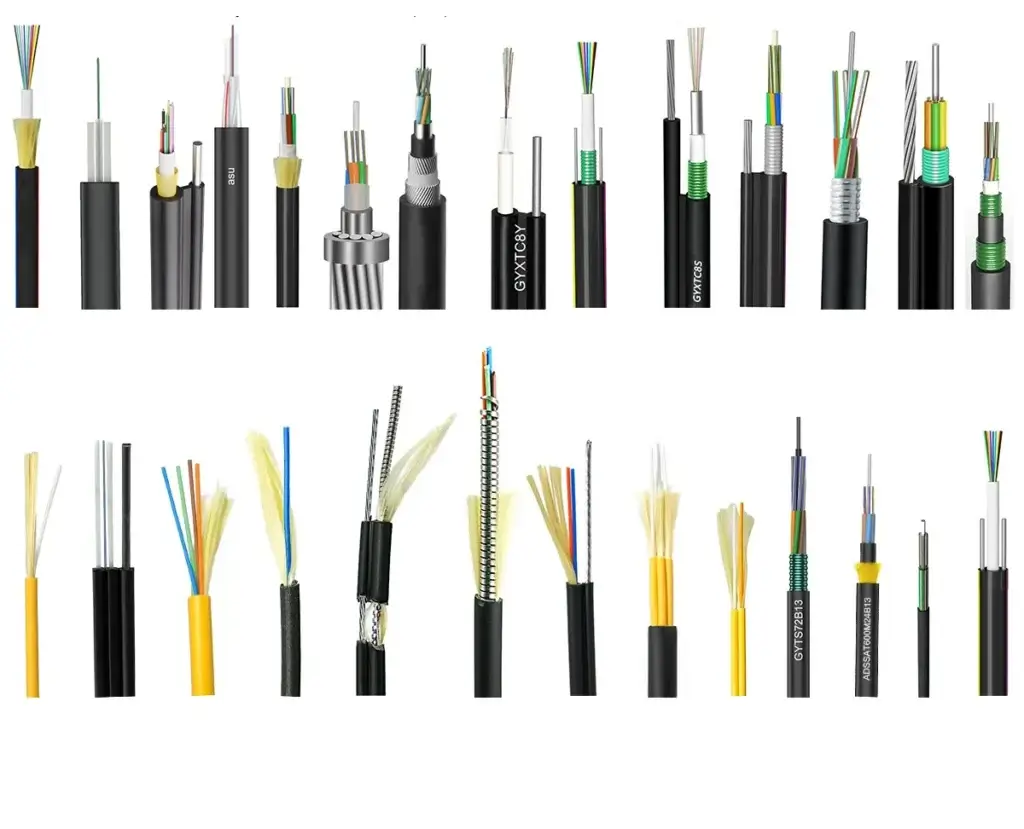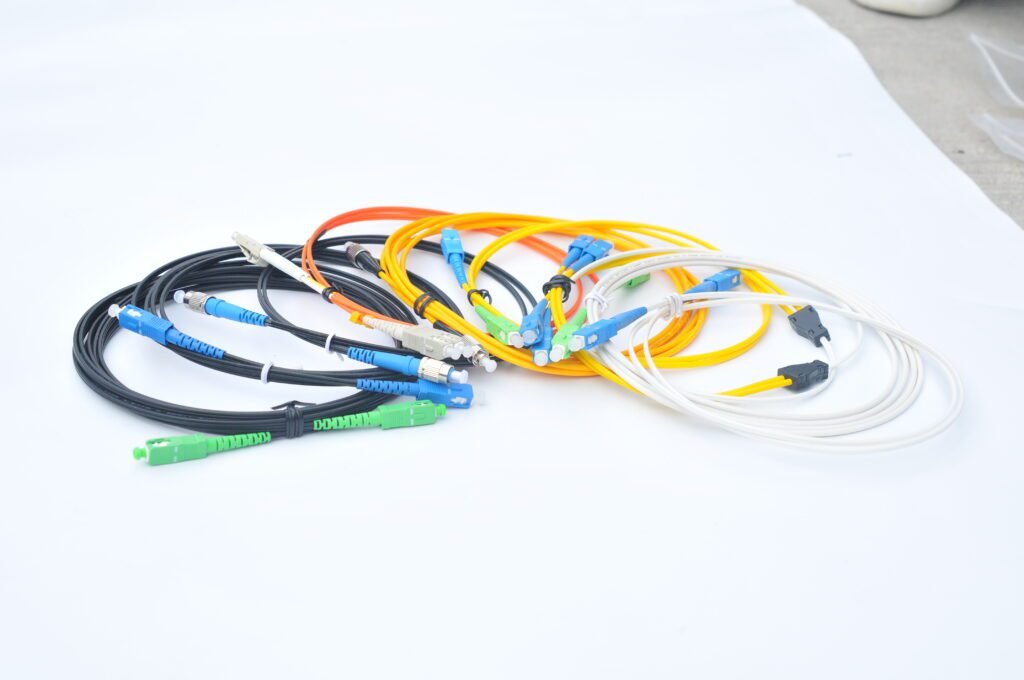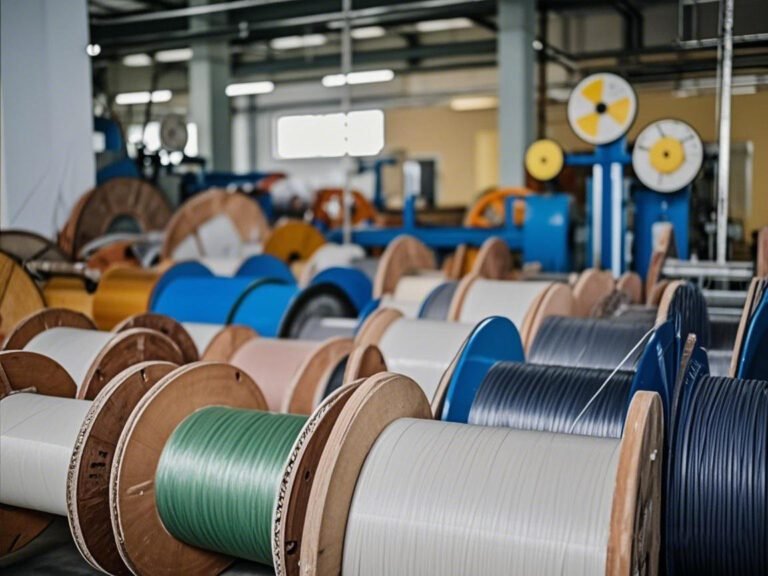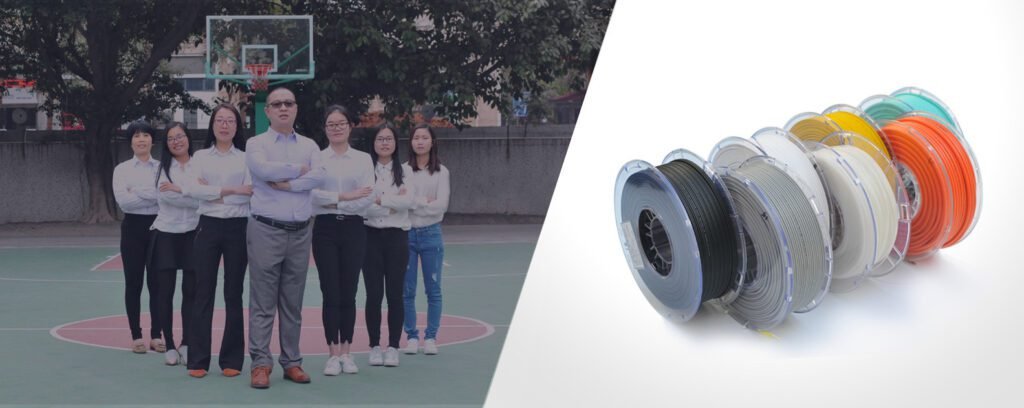How can custom fiber optic cable solutions meet enterprise requirements?
I see many enterprise projects struggle with off-the-shelf fiber cables that don’t fit their unique setups. This leads to wasted time, suboptimal performance, and mounting frustration. I believe custom fiber optic cable solutions1 solve these issues. By tailoring every aspect, we can ensure a perfect fit, maximum uptime, and long-term reliability.
Custom fiber optic cables align with exact enterprise needs. They allow control over fiber type, cable construction, connector styles, jacket materials, and length. By providing specific parameters, enterprises ensure their cables meet performance, durability, and regulatory standards. Tailored cables improve efficiency, reduce downtime, and support unique deployments.
I recall working with a large corporate data center that struggled with mass-produced cables. They faced connector mismatches and insufficient tensile strength. After discussing their exact parameters with a China fiber optic cable factory2, we produced a custom solution that improved performance and durability. Now, let’s explore the key considerations and steps to achieve such tailored results.
Why do enterprises need custom fiber optic cable solutions?
As an engineer handling procurement for specialized telecom or data center projects, I know enterprises often have unique needs. Standard cables might not fit all requirements. Customization helps optimize performance, fit environmental conditions, and ensure compatibility with existing systems. This leads to a robust and future-proof network.
Enterprises need custom cables to match precise technical specs, such as fiber count, connector types, or environmental ruggedness. Custom solutions eliminate compromises found in standard products. This ensures proper system integration, consistent bandwidth, and reduced maintenance. The result is a network tailored for long-term success.
Dive Deeper for h2:
Common Enterprise Situations Requiring Custom Cables
- Unique connector combinations for legacy and new equipment.
- Harsh environments needing armored optical fiber cable3.
- High fiber counts or hybrid designs with both fiber and copper elements.
- Limited space in racks requiring thinner, high-density solutions.
Advantages of Customization
| Advantage | Impact on Enterprise Network |
|---|---|
| Exact Fit | Matches existing infrastructure perfectly |
| Performance Tuning | Fiber type chosen for optimal bandwidth |
| Durability | Materials for harsh conditions, long life |
| Scalability | Prepared for future expansions or upgrades |
| Branding/Color Codes | Custom jackets or fiber cable color code standard4 aids identification |
Personal Experience
A financial institution required specific cable lengths and LC/APC connectors for proprietary server racks. Off-the-shelf cables caused messy management. Custom cables solved this neatly, improved aesthetics, and reduced troubleshooting time.
Which aspects of fiber optic cables can enterprises customize?
Nearly every component of a fiber cable is customizable: from the core fiber type to the outer jacket color. This flexibility ensures the final product precisely matches technical and logistical requirements, creating highly optimized enterprise networks.
Enterprises can customize fiber type (SMF or MMF), cable construction (armored, indoor/outdoor), connector types (LC, SC, MPO, or APC vs UPC connector5 styles), jacket materials (LSZH, PVC), length, labeling, and even packaging. Each choice refines cable performance and handling.
- Fiber Type: SMF for long distances, MMF for short-range high bandwidth.
- Cable Construction: Options like hybrid fiber cable solutions6 combine fiber and copper.
- Connectors: LC, SC, MPO/MTP, APC/UPC polishing.
- Jacket Materials: LSZH for indoor safety, PVC or PE for outdoor durability.
- Length & Packaging: Exact cable lengths reduce slack, customized reels aid deployment.
- Branding & Labeling: Logos, color codes, or QR codes enhance maintenance efficiency.
What parameters must enterprises provide to a cable factory for customization?
Factories need detailed specifications. Without clear parameters, there’s room for error or delay. Providing precise technical details ensures the factory delivers cables that integrate seamlessly and perform reliably.
Enterprises should specify fiber type, count, connector types, environment, jacket material, length, certifications, and any special requirements. By sharing these details upfront, the OEM fiber optic cable7 manufacturer can design, produce, and test cables meeting exact standards.
Parameters include fiber mode (SMF or MMF), fiber count, indoor/outdoor conditions, connector ends (LC/APC, MPO), jacket materials, compliance (RoHS, ISO), length tolerances, and labeling preferences.
What qualities define a reliable fiber optic cable factory for custom orders?
Not all factories can handle complex custom orders. Seek a partner with robust R&D, quality certifications, OEM/ODM services, and global export experience. They should communicate clearly, handle prototypes quickly, and maintain consistent quality.
A reliable factory has ISO-certified processes, advanced testing labs, and knowledgeable engineers. They use modern equipment to ensure stable performance. Strong communication, timely deliveries, and transparent test reports confirm their ability to handle custom demands efficiently.
What performance tests and certifications are needed for custom fiber cables?
Testing ensures cables meet expectations. Factories run optical tests (insertion loss, return loss), mechanical tests (tensile strength), and environmental tests (temperature cycling). Complying with ITU-T, IEC, and TIA standards confirms quality and longevity.
From insertion loss checks to OTDR scans, tests verify cable integrity. Environmental simulations ensure durability in harsh conditions. Compliance with international standards ensures stable, high-performance cables ready for demanding enterprise environments.
How can enterprises streamline the customization process?
Customization can be complex. Clear specs, early communication, and prototype testing help. Iterating on samples refines design before large-scale production, saving time and money.
Define your requirements, share network diagrams, and request sample cables. Test them in real conditions, provide feedback, and finalize specs. This structured approach ensures smooth, efficient customization and prevents costly reworks.
Can custom fiber cables scale with enterprise growth?
Custom cables can be future-proofed. Install extra fiber count or modular connectors. As enterprise needs evolve—5G, IoT expansions—custom cables adapt easily, supporting upgrades without major rewiring.
Design cables with scalable features: higher fiber counts, MPO/MTP for modular expansion, or WDM-compatible fibers. This foresight minimizes downtime and supports painless growth over time.
Are custom fiber cables cost-effective for enterprises?
Although custom cables may have higher initial costs, the long-term ROI often justifies it. Precision fit reduces installation and maintenance effort. Over time, efficiency gains offset the upfront investment.
Custom cables mean fewer patch cords, less slack, and less troubleshooting. They extend equipment life and simplify expansions. The result is lower TCO and improved operational efficiency.
How does prototyping and sample testing improve the custom cable outcome?
Samples prevent surprises. Test prototypes in your environment, check connector fits, measure loss, and evaluate handling. Feedback leads to refined specs and a flawless final product.
Requesting prototypes reduces risk, speeds the learning curve, and ensures large-scale production meets exact needs. It’s a small step that prevents big headaches later.
Conclusion
I remember when enterprises struggled with standard cables. Custom fiber optic cable solutions solve these issues by aligning every detail with unique requirements. Providing precise specs, choosing a capable factory, and performing rigorous tests ensures optimal performance and durability. Prototyping avoids surprises, and future-proof design supports scalability. While initial costs may be higher, long-term savings, stability, and efficiency validate the investment. By embracing customization, enterprises build networks that stand the test of time and emerging technologies.
What is the fiber optic cable solution ↩
OEM fiber optic cable ↩
This resource link provides authoritative insights and practical guidelines that help readers understand and implement the described concept effectively, ensuring better performance, reliability, and compliance in their enterprise fiber deployments. ↩
hybrid fiber cable solutions combine fiber and copper ↩
What is the armored fiber cable to use ↩
Custom jackets or fiber cable color code standard4 aids identification ↩
Fiber Optic Cable Factory In China ↩














